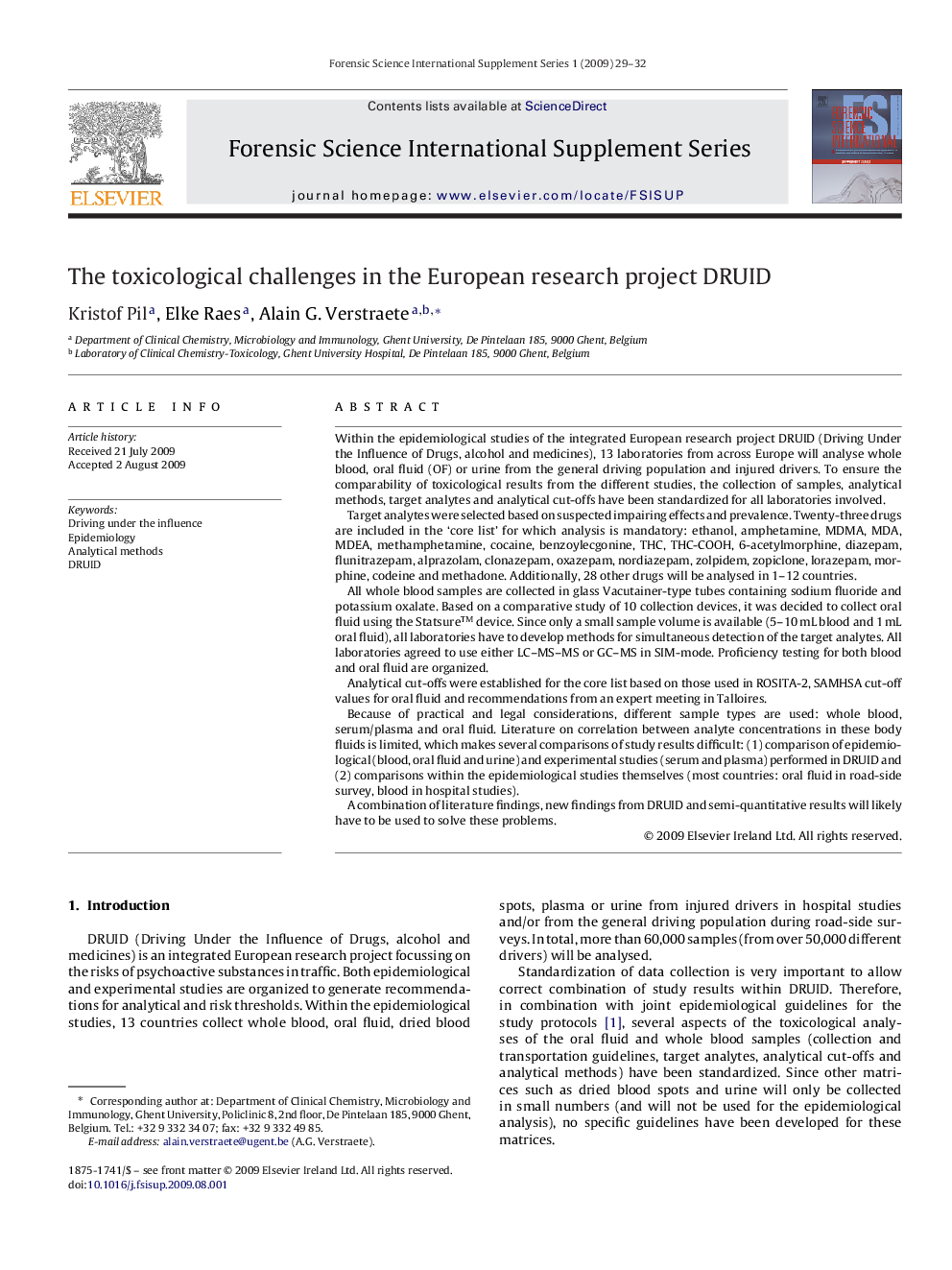| کد مقاله | کد نشریه | سال انتشار | مقاله انگلیسی | نسخه تمام متن |
|---|---|---|---|---|
| 99991 | 160955 | 2009 | 4 صفحه PDF | دانلود رایگان |

Within the epidemiological studies of the integrated European research project DRUID (Driving Under the Influence of Drugs, alcohol and medicines), 13 laboratories from across Europe will analyse whole blood, oral fluid (OF) or urine from the general driving population and injured drivers. To ensure the comparability of toxicological results from the different studies, the collection of samples, analytical methods, target analytes and analytical cut-offs have been standardized for all laboratories involved.Target analytes were selected based on suspected impairing effects and prevalence. Twenty-three drugs are included in the ‘core list’ for which analysis is mandatory: ethanol, amphetamine, MDMA, MDA, MDEA, methamphetamine, cocaine, benzoylecgonine, THC, THC-COOH, 6-acetylmorphine, diazepam, flunitrazepam, alprazolam, clonazepam, oxazepam, nordiazepam, zolpidem, zopiclone, lorazepam, morphine, codeine and methadone. Additionally, 28 other drugs will be analysed in 1–12 countries.All whole blood samples are collected in glass Vacutainer-type tubes containing sodium fluoride and potassium oxalate. Based on a comparative study of 10 collection devices, it was decided to collect oral fluid using the Statsure™ device. Since only a small sample volume is available (5–10 mL blood and 1 mL oral fluid), all laboratories have to develop methods for simultaneous detection of the target analytes. All laboratories agreed to use either LC–MS–MS or GC–MS in SIM-mode. Proficiency testing for both blood and oral fluid are organized.Analytical cut-offs were established for the core list based on those used in ROSITA-2, SAMHSA cut-off values for oral fluid and recommendations from an expert meeting in Talloires.Because of practical and legal considerations, different sample types are used: whole blood, serum/plasma and oral fluid. Literature on correlation between analyte concentrations in these body fluids is limited, which makes several comparisons of study results difficult: (1) comparison of epidemiological (blood, oral fluid and urine) and experimental studies (serum and plasma) performed in DRUID and (2) comparisons within the epidemiological studies themselves (most countries: oral fluid in road-side survey, blood in hospital studies).A combination of literature findings, new findings from DRUID and semi-quantitative results will likely have to be used to solve these problems.
Journal: Forensic Science International Supplement Series - Volume 1, Issue 1, December 2009, Pages 29–32